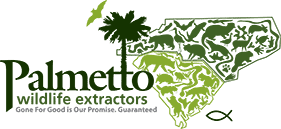
Raccoons are one of the most common creatures to invade our homes looking for a more hospitable environment. So, how can you tell if a raccoon has invaded your home.
- Unknown noises or sounds coming from within your home. You may hear scratching in the walls or coming from your attic. They are known to make a sound close to a chirping type of noise. Raccoons will also fight with other raccoons, so you may hear sounds of fighting, growling or hissing. There could be loud thumps or knocking type sounds from where they are moving around, and if they build a nest to have babies, you could hear the babies crying. There are many types of sounds that you may hear to indicate a raccoon problem in your home.
- Look for any types of signs of raccoon activity. Raccoons are not that sneaky, so you do not have to worry that they have covered their trail. You will most likely be able to easily find some sort of proof that a raccoon has been in or around your home. They may leave muddy footprints, or you may see their footprints outside leading up to your house. They will also leave loose hairs and fur on fences or scattered around any type of entry points they may have used.
- Check for entry points. The raccoon will need to have a way in and out of your home. They may bend or break a vent to gain easy entry into your house. They are known to use their hands and claws to tear holes in screens to get inside. They also like to take advantage of any pre existing holes in your walls or foundation, and they can gain entry to your attic through the chimney and wreak havoc on your electrical wires and your ventilation system.
- Look for raccoon droppings. Raccoon droppings are very similar in appearance and smell (though I would not recommend smelling the droppings) to dog droppings. The easy part is that raccoons love to return to the same place to leave their droppings, so if you see a pile of what you think may be dog droppings, it is probably from a raccoon and not a dog, which is a pretty good sign that you have a raccoon infestation.
If you do fear that you have a raccoon problem, you should not hesitate to call your local wildlife specialist. The sooner you can get the raccoon removed and out of your home the better. They can not only cause property damage but can carry multiple diseases that are harmful to us and our pets.
Raccoon removal is not a quick and easy fix, so you will need to call in someone who has knowledge and experience in removing them and sanitizing your home.

